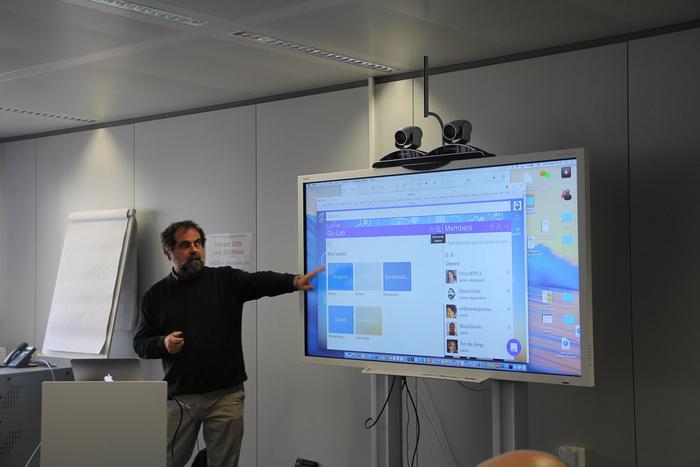As artificial intelligence increasingly permeates every facet of modern life, its influence on education has become undeniable. The digital landscape has rapidly shifted, and traditional pedagogical methods are being challenged as educators find themselves at a crossroads. Not only do they have to navigate new technologies, but they must also reconcile these innovations with established teaching philosophies. In this evolving context, the role of teachers is being redefined, raising crucial questions about the future of education.
Integrating AI into the classroom is not simply about leveraging technology for efficiency; it goes far deeper. Presently, AI assists in personalized learning, allowing for tailored educational experiences that cater to individual student needs. By analyzing data and providing real-time feedback, AI empowers educators to enhance student engagement and learning outcomes. The capabilities of AI, such as speech recognition and virtual reality, facilitate richer interactions between students and teachers, making lessons more immersive and dynamic.
However, the integration of AI is fraught with complexities. Educators may feel apprehensive or resistant, fearing that their roles may be diminished or replaced. This concern echoes historical anxieties surrounding technological advancements. Yet, this fear can obscure the potential benefits that AI brings to the educational landscape. Teachers play a vital role in this transition, using their expertise to guide and mentor students through technology-driven changes.
For instance, a recent commentary published in the ‘ECNU Review of Education’ by Assistant Professor Louie Giray illustrates the need for educators to embrace this transformation. Giray, drawing upon the Kübler-Ross model of grief, frames the adoption of AI in education as a metaphorical “death” of outdated teaching practices that must be “reborn” to coexist with modern tools. This perspective encourages educators to view technological adaptation not as a loss, but as a progression toward more effective teaching.
Navigating this shift involves emotional and psychological adjustments for educators. Giray identifies the stages of grief—denial, anger, bargaining, depression, and acceptance—as pertinent to teachers’ experiences. When faced with the pressures of integrating AI, many educators may oscillate through these stages as they confront the implications for their practices and identities. Understanding this emotional journey is essential for supporting teachers during this critical phase of transformation.
Moreover, the role of educational policymakers cannot be overlooked. They must create an environment conducive to change by providing robust support systems for teachers. This includes promoting ongoing professional development opportunities, offering psychological resources, and encouraging open dialogues concerning the challenges and triumphs of integrating AI in education. Policymakers have the responsibility of fostering an educational culture that celebrates innovation while respecting tradition.
Giray posits that adapting to AI requires a proactive mindset. Educators are urged to approach AI with resilience—like bamboo bending in the wind, not breaking. This adaptability is not merely about survival; it is about thriving in an ever-evolving educational landscape. Educators who engage thoughtfully with AI can find new avenues to enhance their teaching methodologies and improve student outcomes, paving the way for a brighter, more inclusive future.
Critically, questions about the limitations of AI must also be addressed. While it offers numerous advantages, it is not a panacea for all educational challenges. As Giray keenly points out, certain situations demand the nuanced judgment of human educators. The arts of empathy and understanding, essential in teaching, cannot be replicated by algorithms. This recognition reinforces the idea that human connections are irreplaceable in fostering meaningful educational experiences.
Despite the challenges ahead, embracing AI holds the promise of transforming education for the better. By harnessing the power of analytics and machine learning, teachers can facilitate more personalized interactions, allowing students to thrive academically and emotionally. Giray suggests that effective AI integration can lead to improved instructional methods, where educators are better equipped to meet diverse student needs.
Beyond simple integration, this transformation necessitates a philosophical shift. Educators must expand their conceptual frameworks to include technology as an ally rather than an adversary. As they evolve, teachers are encouraged to redefine their roles in tandem with emerging technologies, preparing to guide students in an interconnected world.
In conclusion, as we stand at the nexus between tradition and innovation, the message from educators like Louie Giray resonates clearly: embracing the challenges posed by AI will not lead to the obsolescence of teachers but rather, it opens doors to unprecedented opportunities for growth and development. Those willing to adapt in this new educational terrain will emerge not just as survivors but as pioneers of a reimagined learning landscape, ready to shape the next generation of thinkers and innovators.
As we reflect on this transition, educators must remember that while the tools may change, the core mission of teaching—nurturing curiosity and fostering critical thinking—remains unchanged. With courage and foresight, educators can navigate the complexities of AI integration, ensuring that education evolves to meet the needs of all students in an increasingly digital world.
Subject of Research: Integration of AI in Education
Article Title: “Death of the Old Teacher”: Navigating AI in Education Through Kubler-Ross Model
News Publication Date: 11-Mar-2025
Web References: ECNU Review of Education
References: DOI: 10.1177/20965311251319049
Image Credits: Credit: europeanschoolnet from Openverse
Keywords: Education technology, Teaching, Educational assessment, Educational software, Educational methods, Science education, Curriculum reform, Education policy




